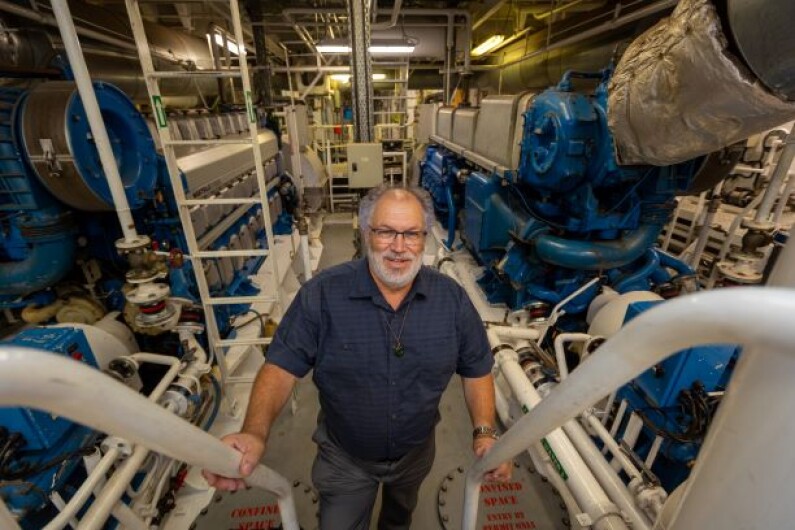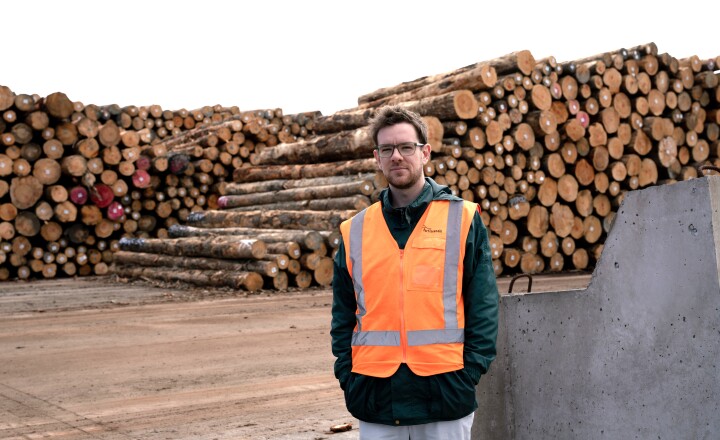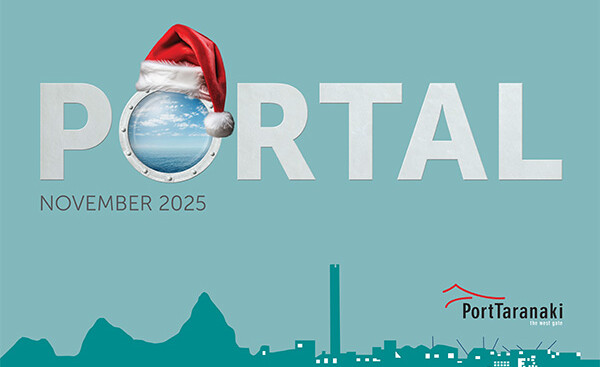
For more than four decades, Grant Squire has played a leading role in keeping Port Taranaki’s fleet of tugs and launches ship-shape and on the water.
Now, the marine engineering manager’s focus will turn to keeping his motorhome primed and on the road as he settles into a retirement of road trips, photography and woodwork.
Grant, 62, finishes at Port Taranaki today – 46 years to the day since he took up tools at the port as an apprentice fitter welder. And it’s a career he owes, in part, to big brother Murray.
“Murray had been an apprentice fitter welder at Port Taranaki before me,” he recalls. “When I decided that was the direction I wanted to go, I approached the port asking if there were any apprenticeships.
“I was quickly told, ‘no we’re not taking on any apprentices, but who are you?’. I said ‘I’m Murray Squire’s brother’.
“‘Oh, OK’ was the reply. ‘You’ve got a job’. And that was it.”
So began a career that has taken Grant from landside, including as leading hand in setting up a separate machine workshop and hydraulics bay at the port, to 25 years on the water as a tug engineer, including being involved in the build of tug Tuakana, and back to dry land, where he has led the implementation of key software maintenance management programs, coordinated the engineering maintenance of the port’s fleet, and taken charge of major marine projects, including the build of pilot launch Mikotahi and tug Kīnaki.
“I’ve tended to move through the company as my experience and ability have allowed,” he says.
“I spent eight years at night school completing a New Zealand Certificate Engineering, which gave me the tertiary background to go with the practical knowledge.”
In Grant’s time at the port, there have been many notable changes, not least the advances in technology – from single sideband radio, radar and compass, to GPS, cellular computer networks, and state-of-the-art vessel systems.
“But I guess the most significant was moving from the Taranaki Harbours Board environment to the commercial environment of today. In the early days on the tugs, the focus was solely operational – it was about keeping them reliable and operating – whereas today there is a clear commercial focus to their role in supporting the port business and port customers,” he says.
In a career that has included a host of highlights, Grant says he is most proud of leading the $12 million Kīnaki project from 2016-18.
“That was definitely the most rewarding and probably my greatest challenge. To have a contract such as that under my responsibility was a privilege – from customising the concept drawing for the port’s needs, through to communicating and working with builders on the other side of the world [Turkey], and finally getting it delivered and in service.”
The father of sons Brad and Logan, and grandfather of four, is now looking forward to travelling the country with wife Rel in their motorhome, getting back into some photography, and spending time in his workshop.
“It’s the right time – I’m struggling to fit work into my lifestyle,” he laughs.
He says it’s the people he’ll miss most at Port Taranaki.
“There’s always been great, supportive people here, right from when I was an apprentice through to today.
“And I’ve had really good teams on the tugs and launches – people who go outside what’s required to get the job done and who are passionate about what they do and the port.”


